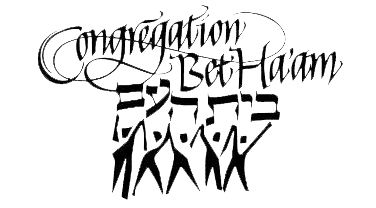What does the 2012 Fox TV show Touch, a gelato place, and the Jewish concept of the “Righteous 36” all have in common?
The TV show Touch centers around a nonverbal, likely autistic young boy named Jake. Jake is not able to talk or communicate with the world in a typical way, so instead he communicates in numbers. Jake uses numbers to communicate with his dad about people in the world that need his help. People in very disparate corners of the world end up being connected, and through a series of events that Jake sets into motion, he ends up relieving the suffering of people in places both close and far away.
There is another character in the show that believes Jake is part of what he calls “the righteous 36.” This is a Jewish concept that has many variations. At its core, however, the belief states that there are 36 “saintly” or righteous individuals on whose presence the world hinges on. They are supposed to remain anonymous, to both each other and us. They don’t even know themselves if they are one. There are many interpretations of this, but the show sees it like this: Jake’s purpose in the world is to help relieve the suffering of others, anonymously. His actions have ripple effects that help people in a myriad of ways.
Jake does this all while living with a profound disability. I suppose this is what attracts me to the show and concept. The older I get, the more philosophical I try to get about the disabilities that I live with. The older I get, the more I struggle with the sensory issues, extreme anxiety, and myriad physical symptoms that my developmental disability and chemical sensitivity cause me. As time goes on, I get more and more frustrated trying to find ways to be part of the world in a way that feels tolerable to me. I get more and more frustrated trying to explain myself to others. I become more and more tired of the enormous feelings of guilt and shame I struggle with on a daily basis. Living the way I do requires being able to ask for a lot of help from the people around me just to get through an ordinary day. I try to do this with a smile on my face to temper the unpleasantness of having to ask, but after a while it’s just enough to make you want to sleep for a thousand years and never wake up.
So I look for examples or moments in my daily life that have meaning to me beyond disability and beyond the frustration of living. Today, one such moment occurred while I was at a gelato shop. I used to go here frequently before my sensitivities made it more difficult. I went today for the first time in six months. While I was there, I witnessed a customer being extremely rude and nasty to the very friendly and welcoming employee, who did not deserve this diatribe. When the customer left, I was quick to support the employee and tell her I thought the customer had been very out of line. Her relief and gratefulness were palpable, and her smile melted my heart. My day had been challenging, but this one moment of being able to help another person made it all so much easier for me to bear.
“Touch” is all about how people are connected to each other in seemingly random, endless ways. It incorporates the Jewish concept of the 36 righteous ones, and while I may not take everything that this theory incorporates into heart, I think as a whole the concept is an intriguing one that can be applied to daily life in many ways.

